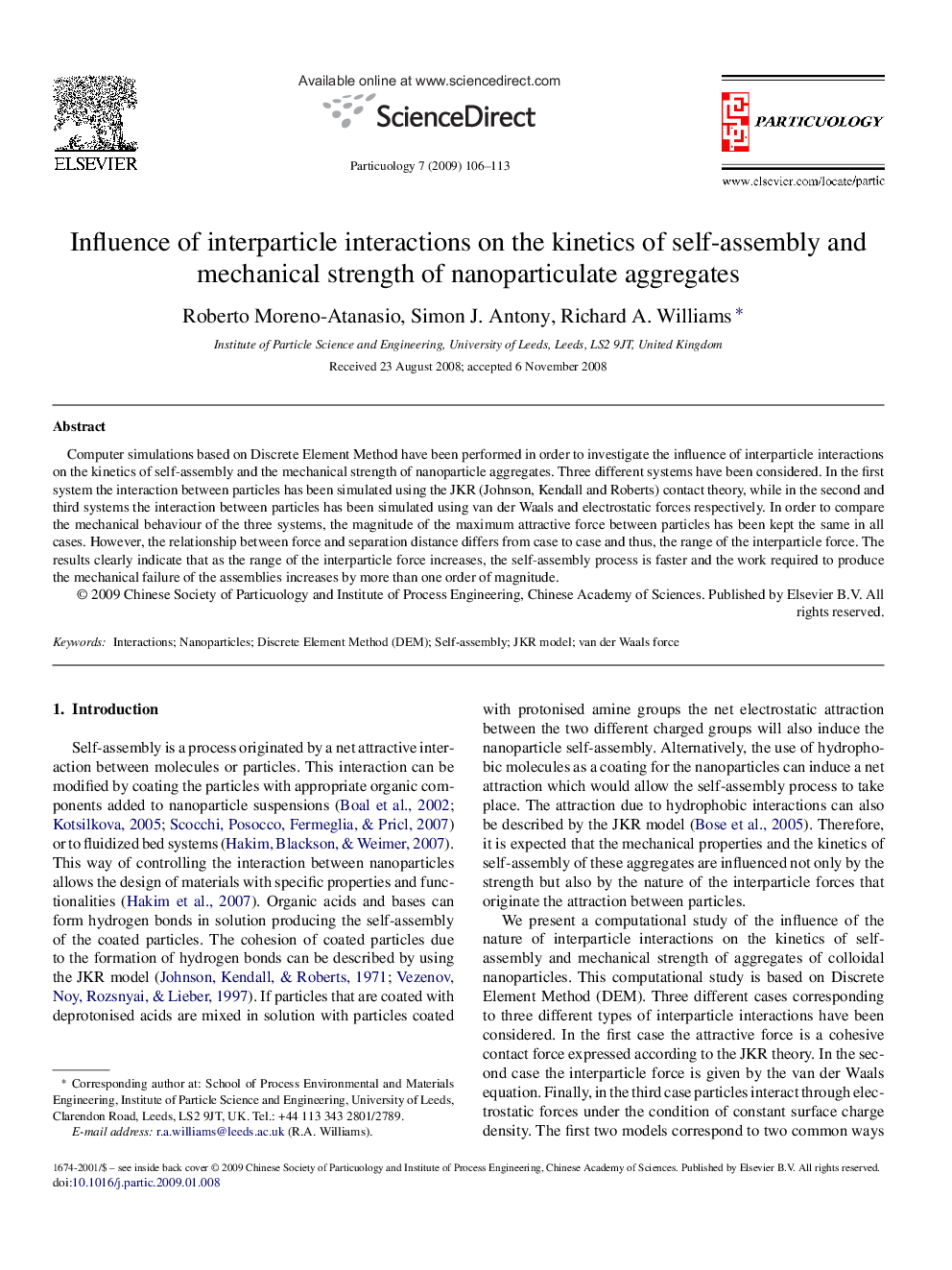| Article ID | Journal | Published Year | Pages | File Type |
|---|---|---|---|---|
| 672532 | Particuology | 2009 | 8 Pages |
Computer simulations based on Discrete Element Method have been performed in order to investigate the influence of interparticle interactions on the kinetics of self-assembly and the mechanical strength of nanoparticle aggregates. Three different systems have been considered. In the first system the interaction between particles has been simulated using the JKR (Johnson, Kendall and Roberts) contact theory, while in the second and third systems the interaction between particles has been simulated using van der Waals and electrostatic forces respectively. In order to compare the mechanical behaviour of the three systems, the magnitude of the maximum attractive force between particles has been kept the same in all cases. However, the relationship between force and separation distance differs from case to case and thus, the range of the interparticle force. The results clearly indicate that as the range of the interparticle force increases, the self-assembly process is faster and the work required to produce the mechanical failure of the assemblies increases by more than one order of magnitude.
